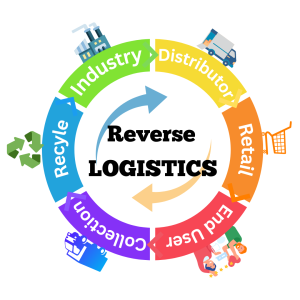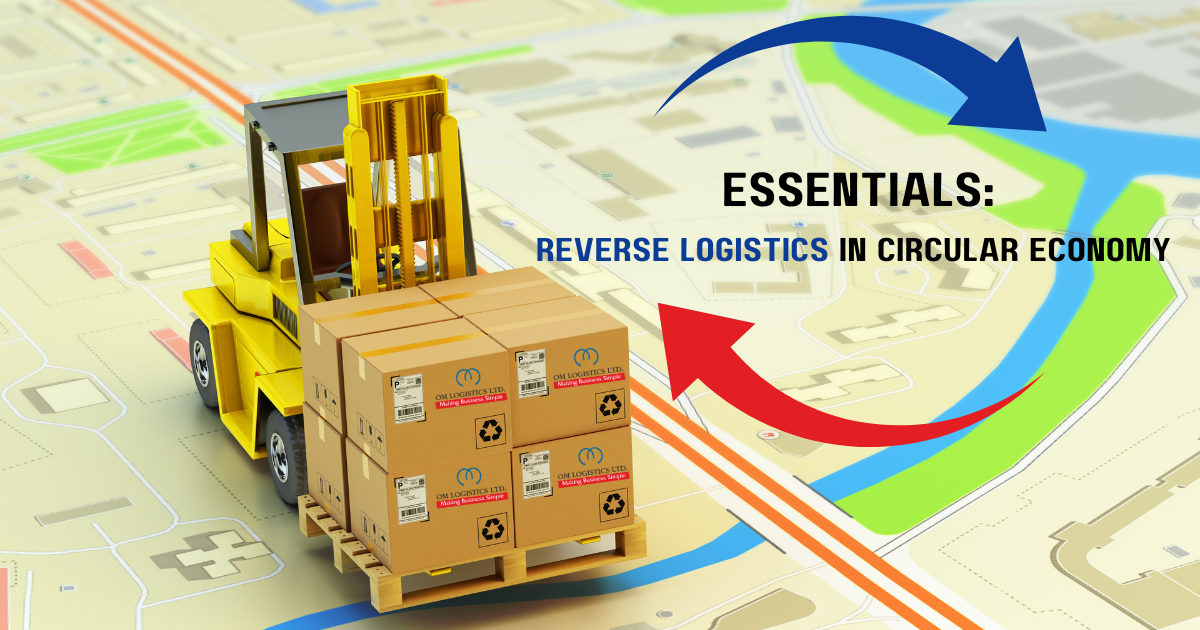In the pursuit for sustainable development, the concept of a reverse logistics & circular economy has gained a lot of attention from e-commerce buyers, sellers & manufacturers. Taking a quick ride towards a circular economy, it aims to maximise resource, minimize waste and promote the 3R’s (recovery, recycling, and reuse) of industrial products and materials. Referring the term logistics, it is a door-to-door material delivery process from one place to another. On the other hand, “Reverse Logistics” includes delivery of goods to the end customer & bringing it back to the base. For example, if you book a shipment from a company and received it but due to any reason if you want to return it you can opt for reverse or return logistics service.
Here, we will give you an overview about the optimization of reverse/return logistics and circular economy.
The significance of Reverse Logistics:-
It refers to the process of moving goods to the final destination and sending back to their respective places. By merging reverse logistics into the supply chain, businesses can now re-capture the value and reduce industrial waste. It procures the recovery of valuable goods and materials through processes like refurbishment, remanufacturing, and recycling. It may include the warehousing and distribution.
Some important strategies for enhancing Reverse Logistics. What you can do?
To take the full advantage of return logistics while encouraging the circular economy, business houses should implement the following strategies:
1. Design for Disassembly:-
Incorporate design principles that prioritize easy disassembly of products at the end of their life span. This allows the efficient separation of valuable goods and materials.2. Efficient Return Processes:-
Smooth-running the return processes to minimize the time and cost involved in goods transportation and inspection. This encourages customers to participate in such goods retract initiatives.
3. Collaboration and Partnerships:-
Promote collaborations with suppliers, customers and third-party service providers to establish systematic reverse supply chain systems. This ensures the right flow of returned goods while maximizing resources.4. Data Analytics and Visibility:-
Taking advantage of advanced analytics and tracking techs to gain insights into reverse logistics operations. This allows finer decision-making, enhanced forecasting, and hassle-free inventory management, ultimately optimizing resource utilization to the fullest.5. Education and Awareness:-
Educating customers and stakeholders about the significance of returning products for recycling or refurbishment. Uplift responsible consumption and promoting circular flow of economy principles through effective awareness campaigns.5 Steps to Good Reverse Logistics :-
1. Process the Return – The process starts when the customer requests that they want to return the good. This step should include return authorization and identify the product’s condition. This process also involves scheduling return shipments, approving refunds and returning the damaged and faulty goods.
2. Deal with Returns – Once a returned product arrives at your centralized processing centre, it goes in inspection category. Sort products into the disposition options: fix, resell as new, resell as a return, recycle, scrap or refurbish.
3. Keep Returns Moving – It reduces daily industrial waste by sending repairable items to their respective departments
4. Repair – After reviewing the returned goods/equipment and analysing them whether they can be repaired. If not possible, sell any sellable parts.
5. Recycle – If there is any part of product that you cannot fix, reuse or resell should be sent for the recycling.

Benefits and Future perspective:-
Merging reverse logistics into the circular economy brings various advantages. It brings down waste generation, conserves resources, and decline greenhouse gas emissions associated with raw material extraction and production of goods.
Moving forward, the universal adoption of reverse logistics is necessary for achieving a circular economy globally. Governments, businesses, and consumers must work synergically to establish encouraging policies, invest in infrastructure, and prioritize resource-efficient practices.
Embracing reverse logistics, we can move bit closer to a sustainable future for generations, where waste is minimized, resources are optimized, and economic growth is distinguished from environmental downgrading.
- Reduces Loss
- Customer satisfaction
- Customer retention
- Faster and better services
- Cost reduction
- Improved brand sentiment
- Sustainability
Conclusion:
Reverse logistics is an important practice in the circular flow of economy, it enables businesses to check resource efficiency and reduce wastages. By integration of reverse logistics strategies, such as design for disassembly, efficient return processes, collaboration, data analytics, and education, we can advance a more sustainable and circular approach to production and consumption of goods worldwide. Applying reverse logistics not only helps the environment but also opens up new gates for economic development and further opportunities.

